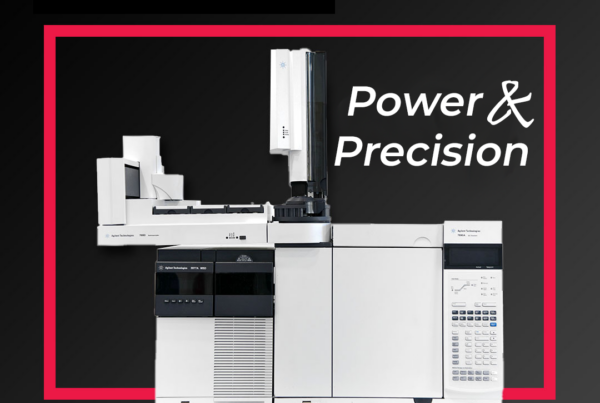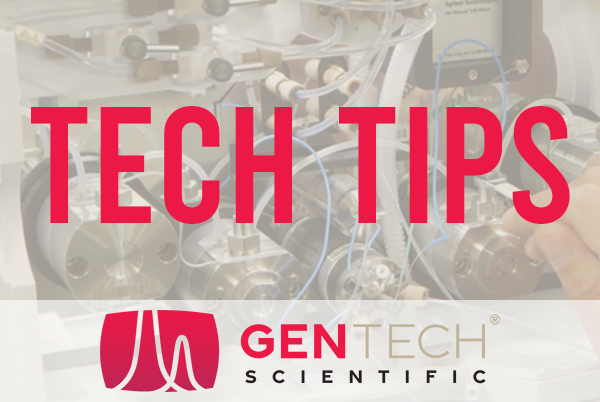Mass spectrometry is an analytical method that many industries use worldwide. Below, we’ll provide an overview of mass spectrometry and its many common applications, from proteomics to forensic analysis.
What Mass Spectrometry Is
Before delving into the many applications of mass spectrometry, we must define it. Mass spectrometry is an analytic technique researchers primarily use to identify and quantify compounds in a sample.
Mass spectrometry measures the mass-to-charge (m/z) ratio of one or more molecules in a sample to identify and quantify unknown compounds. With these measurements, the researcher can determine the exact molecular weight of the components. Once the exact molecular weight is known, scientists can identify the compound and determine its structure and chemical properties.
How a Mass Spectrometer Works
Knowing how a mass spectrometer works is also important for understanding the basics of mass spectrometry and its use. Mass spectrometers have three essential components: an ionization source, a mass analyzer, and an ion detection system.
Ionization
The first step in mass spectrometry is to convert the sample molecules to gas-phase ions, which external electric or magnetic fields can manipulate later. To convert the molecules to gas, a mass spectrometer vaporizes them. After vaporization, the device bombards the vapors with an electron beam to convert them to ions.
Ions are created either by giving or taking away electrons from a molecule, resulting in either a negatively or positively charged ion, respectively. Since mass spectrometry measures the mass of charged particles, the analysis doesn’t notice neutral molecules.
Mass Analysis
Once the mass spectrometer creates the ions, it must separate them according to their mass. There are two strategies for sorting ions: acceleration and deflection.
To accomplish acceleration, the machine accelerates positive ions toward negative plates, using their speed to analyze their mass. The lighter the ions, the faster they’ll move. Likewise, the heavier they are, the slower they’ll move.
Deflection is similar, but the process uses a magnetic field to deflect the ions, and their deflection speed is what the machine uses to identify the mass. From this movement, scientists can determine the molecule’s m/z ratio.
Ion Detection
Now that the mass spectrometer has sorted the ions and separated them according to their m/z ratios, it can measure them and send them to a data system of the ratios. With the m/z ratio information, the mass spectrometer’s computer creates a plotted chart that tracks the ions present against their intensities.
The chart features a series of peaks, each peak being a unique component in the sample with its m/z ratio. From this information, scientists can determine the exact molecular weight and identify and quantify the unknown compound.
Common Applications for Mass Spectrometry
Mass spectrometry is an incredibly useful analytical tool that is common in many applications and branches of science. Below is an overview of mass spectrometry’s most common applications.
Proteomics
One of the most common applications of mass spectrometry is the field of proteomics. Proteomics is the study of the structure and function of proteins—that is, how proteins work and interact with each other inside cells.
Proteomics is especially important for disease research, as many diseases manifest at the protein level. Mass spectrometry is very useful, as it can precisely determine the molecular mass of peptides and proteins and their sequences. This makes it a major method for protein identification.
Metabolomics
Metabolomics is the analysis of the small molecular metabolites in a biological system. Researchers in the field study the effects of drugs, toxins, and diseases on a body’s metabolite levels.
Mass spectrometry is useful as a biomarker discovery tool—identifying the significant differences between a healthy patient’s sample and a sample with the disease or toxin. In cancer and diabetes research, mass spectrometry is a common tool for discovering the unique identifiers of the disease.
Environmental Analysis
Mass spectrometry is not just for identifying unknown compounds in our bodies but our environment as well. Therefore, one of the most common applications for mass spectrometry is in the food industry. In fact, every step of the supply chain for food and drink features some form of mass spectrometry. Whether analyzing drinking water and soil or ensuring there are no packaging contaminants on the food, mass spectrometry is key to consumer safety. Plus, it ensures the quality of the food meets what’s labeled and claimed. Essentially, mass spectrometry is an indispensable part of the process of growing, producing, and processing food that’s safe for consumption.
Pharmaceutical Analysis
Just as mass spectrometry is a powerful tool for ensuring the water we drink and the food we eat are safe, it also ensures the drugs we take are safe. Mass spectrometry is a quick and accurate method for detecting drug impurities that the pharmaceutical industry frequently uses.
Mass spectrometry also improves the entire drug cycle, helping to discover new compounds and drugs and identifying them in human bodies during clinical trials and studies. With mass spectrometry, the pharmaceutical industry can ensure a drug hasn’t been contaminated and can track its speed of distribution in the body.
Forensic Analysis
Mass spectrometry is also a common tool in the forensic analysis field. As mass spectrometry can quickly identify unknown compounds, it’s a hugely beneficial tool in law enforcement investigations, such as arson. In this case, it can identify trace evidence of accelerants.
Mass spectrometry is also a tool for identifying trace substances in the human body, from proving recreational drug use to quantifying steroid use for athletes. Therefore, anyone who has ever taken a drug test has taken part in one of the everyday applications of mass spectrometry.
Conclusion
We hope our guide has shown how mass spectrometry is prevalent and useful in our daily lives. At GenTech Scientific, we have mass spectrometry equipment for every type of lab and application, from environmental to forensic analysis.
Contact our knowledgeable staff if you have further questions about mass spectrometry or its applications and equipment. If your lab requires new mass spectrometry instruments, we’ll help you find the equipment that fits your application and budget.







